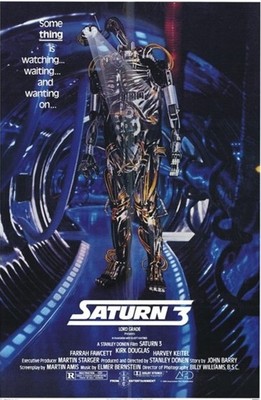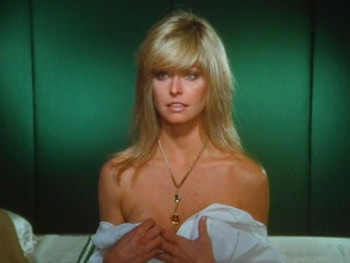Les Lèvres Rouges | Germany/Belgium/France | 1971 | Directed by Harry Kümel
Logline: A newlywed couple book into a seemingly deserted resort hotel and are seduced by a mysterious countess and her equally alluring protégé.
This deep trash gem is a rare and fabulous creature; self-consciously delicate and artfully fragile, yet infused with a volatile darkness and disquietingly dysfunctional characters. Exploitation fare for well-versed vamps. Although shot in the English language its original French title translates as the sexually-charged The Red Lips.
Stefan (John Karlen) and Valerie (Danielle Ouimet) are newlyweds holidaying through Europe. They book into the Hotel Ostend in Beligum where they are immediately spotted by Countess Elizabeth Bathory (Delphine Seyrig) and her assistant (read: lover) Ilona (Andrea Rau). The Countess is smitten with silky blonde Valerie. The concierge (Paul Esser) is intrigued by Ms. Bathory, as she has the same name and looks exactly like a woman who stayed at the hotel 40 years earlier, when he was a young bellboy. The Countess tells him he must be confused.
Valerie is anxious for Stefan to confirm their arrival in England with his mother, but he is reluctant to make the connection. Instead they visit nearby Brugge where Stefan finds himself morbidly fascinated with a bizarre murder scene. Later, back at the Ostend, Stefan is mesmerised by the Countess who ingratiates herself. Valerie is disgusted. Valerie’s wariness sends Stefan into a schizo rage and he mercilessly beats her with his belt. At dawn light while Stefan sleeps she packs her bags and leaves for the train, only to be intercepted by the Countess, while Ilona goes to seduce her husband.
There is a most curious sub-plot that concerns Stefan’s true nature; when he finally calls his mother to placate Valerie, and it’s revealed that “mother” is in fact a middle-aged queen whose feathers are slightly ruffled at the “unrealistic” idea that Stefan has married a woman; “Whatever will we do with her?” This camp avenue of characterisation provides the narrative some serious eccentricity, as does the extended “let the dead bury the dead” scene at the beach where the Countess has Stefan tidy up his dirty work.
While the performances and much of the dialogue hinge on the risible (suggesting a tenebrous comedy at play), there is a deliciously alluring oneiric quality to the look, feel, and atmosphere of the movie. It is a vampire tale unlike most as there are no fangs on display, whatsoever, but it oozes a sly eroticism. This is psychosexual bloodlust of the most provocative and fevered kind, using a real and infamous historical figure as the sensual villain.
The movie, although savagely violent in places, floats and glides with a distinct feminine wile. The three female leads contrasting beautifully against each other in look and personality: long blonde-haired Valerie with her equine-face and piercing blue eyes, Ilona with her black Louise Brooks bob and large fraulein features (big dark eyes and huge red mouth), and the Countess, with her white gold curls, porcelain skin, and that oh-so-delicate voice that whispers sweet nothings, carrying you softly into the darkness forever.
Kümel fills his slow-burn dream with stunning, brooding images of landscape, architecture and figure; the fang-like car hurtling through the night, Ilona perched in the shadows waiting as Stefan stirs in his sleep, belt still in hand, the Countess slowly wrapping her bat-like cloak around Valerie on the sand dunes, the body lying wrapped in black polyurethane in front of the hotel. The movie sings like a thirsty siren; a Gothic torch song for the undead, an insidious legacy destined to unfurl over and over and over.
“I’m just an outmoded character, you know, the beautiful stranger, slightly sad, slightly mysterious, that haunts one place after another…,” muses the Countess to Stefan and Valerie after events have taken a turn for the more complicated.
The movie’s infamous violent shock ending might seem a trifle absurd now, but it still works on a gorgeously wretched, poetic level, and then there’s the coiling serpentine epilogue which layers on yet more mystery… The red lips quivering again, another soul kiss for another night, raising goosebumps, caressing cold flesh … and lying still through another day.
Definitely one of my favourite vampire movies.



















































